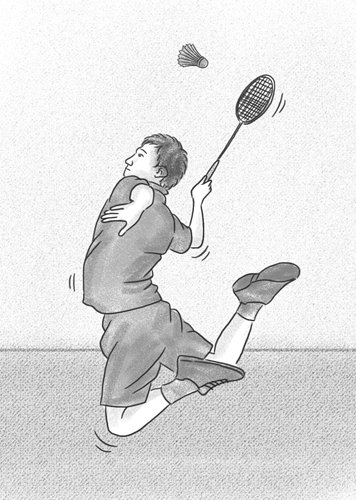COMMENTS / INSIDER'S EYE
China ready to counterattack as it adapts to US tariffs

Illustration: Xia Qing/GT
The tit-for-tat trade conflict between the US and China of a magnitude and endurance the world has rarely witnessed before has entered a stalemate or seesaw phase.
Both Beijing and Washington are seen entrenching deeper, refusing to yield any ground.
The months-long tussle, ignited by the US government in its desperate desire to impede and hold back China's growth, is actually a stress test for China's policymaking apparatus to steer the second-largest economy down a path of ad hoc responses, adaptation, regaining resilience and finally, counterattacks.
Lately US President Donald Trump renewed his gambit by threatening to levy more tariffs on $325 billion worth of Chinese goods. But this time hardly any Chinese economists or ordinary residents were unnerved or even agitated by the news. Many openly displayed contempt and some called it a bluff by the White House.
Two hard factors are clearly been written on the wall. First, China's economy retains growth rates of more than 6 percent despite 25 percent tariffs on $250 billion Chinese imports. Second, where will US shopping malls and e-retailers replenish if $325 billion in Chinese daily necessities are stopped by the Trump administration?
Some observers warn that if Trump blocks Chinese clothes, there might be a real danger that Americans may walk the street naked. The thought that many store shelves run empty sends shivers down the spine. The Wall Street would certainly not clamor for that kind of market chaos.
Nowadays in the eyes of many Chinese, the Trump administration looks increasingly like a bigoted bully - fighting salvos of punitive tariffs against China and other economies, destroying global supply chains and endangering smaller economies that rely on trade. At home, the White House has relentlessly waged a war on a squad of US freshman Congresswomen. The most agonizing fact is that the administration is reveling in two wars.
All that US President Donald Trump craves is not to be seen as weak or caving into China or Russia or India or the EU. He tries his best to sway white voters in the so-called US swing states to support the policy of strictly restricting immigration in order to win next year's presidential re-election.
However, China, now basking in an impressive 6.3 percent economic GDP growth rate in the first half of 2019, is firming up its bastion, ready to fight a prolonged trade war of attrition. Beijing also aspires to set an exemplary role for other sovereign states to say "no" to a tariff-wielding bully.
By connecting the dots, one can find the trajectory of China's policymakers, who are becoming more steadfast and determined to launch counterattacks. What they want to attain is simply to combat trade protectionism and economic imperialism, and uphold global equality and justice.
Relying on boisterous domestic consumption which rose 9.8 percent in June, China is now a lucrative market for all economies including the US. China's government is expected to promulgate clear-cut rules on placing rogue American companies on its non-reliable entity list.
US businesses that toe the Trump administration's order and harm Chinese high-tech firms such as Huawei, or are found selling arms to China's Taiwan, will be sanctioned.
No US companies that are hurting China's core interests - territorial integrity or technology competitiveness - will escape unscathed.
Beijing has time and again warned that if the Trump government stubbornly raises tariffs and escalates the trade war, it will cut off rare-earth mineral supplies to the US.
China's holdings of US Treasury bonds have declined for three consecutive months from March to May, according to media reports. Beijing is unlikely to use its US Treasury holdings as a weapon, but it is a subtle warning that China will no longer purchase the papers, a tactic forcing the White House to think things over before escalating the trade fight.
The author is an editor at the Global Times. bizopinion@globaltimes.com.cn
